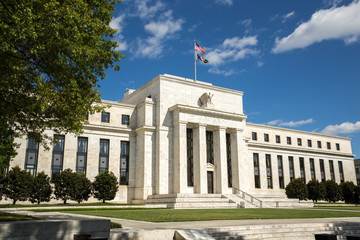 Wednesday marked the first day of Federal Reserve Chairman Jerome Powell’s testimony to Congress, and analysts around the world paid close attention to everything he had to say. Of specific interest was Powell’s hints about whether or not the Fed will cut interest rates this month. Powell reinforced the idea that policy will be crafted based on economic demands (or lack thereof), not on pressure from President Donald Trump, who has been pushing for an interest rate cut for months, and has even presented veiled threats to fire Powell if he does not oblige. House Financial Services Committee Chair, Maxine Waters, voiced her support for Powell and urged him not to bend to Trump’s demands. Powell is known for his willingness to meet with lawmakers in an effort to defend himself and the Fed’s policy’s against presidential rebuke. According to CNN, he’s had more than 100 meetings with individual lawmakers during his 18-month tenure.
Wednesday marked the first day of Federal Reserve Chairman Jerome Powell’s testimony to Congress, and analysts around the world paid close attention to everything he had to say. Of specific interest was Powell’s hints about whether or not the Fed will cut interest rates this month. Powell reinforced the idea that policy will be crafted based on economic demands (or lack thereof), not on pressure from President Donald Trump, who has been pushing for an interest rate cut for months, and has even presented veiled threats to fire Powell if he does not oblige. House Financial Services Committee Chair, Maxine Waters, voiced her support for Powell and urged him not to bend to Trump’s demands. Powell is known for his willingness to meet with lawmakers in an effort to defend himself and the Fed’s policy’s against presidential rebuke. According to CNN, he’s had more than 100 meetings with individual lawmakers during his 18-month tenure.
Powell’s hints towards an impending interest rate hike were based on his belief that trade tensions between the U.S. and China and lingering weakness in the global economic outlook warrant such measures. “It appears that uncertainties around trade tensions and concerns about the strength of the global economy continue to weigh on the U.S. economic outlook,” Powell said.
Another interesting issue that Powell addressed was a return to the gold standard, which he thinks would be damaging for the U.S. He commented that the Fed has two specific economic goals: stable prices and maximum employment, and he says that it would be impossible to focus on unemployment while attempting to stabilize the dollar to the price of gold. “No other country uses it,” Powell said, referring to the gold standard. The reason that Powell’s comments about this topic were of specific interest is because current Fed nominee Judy Shelton has publicly spoken in favor of monetary policy reforms and has written that a return to the gold standard would offer specific advantages for the U.S. economy. Powell’s outspoken divergence from Shelton’s views calls into question how the Fed would run if she is confirmed.
S&P Breaks 3,000 for the First Time
On Wednesday, the S&P 500 broke through the 3,000 level for the first time ever before retreating slightly to close the day at 2,993.07, a 0.05 percent gain for the session. The NASDAQ closed up 0.75 percent on the day and the Dow Jones Industrial Average ended 0.29 percent higher. Asian markets were broadly higher on Thursday morning, piggy-backing off Wall Street’s gains and taking cues from Chairman Powell that an interest rate cut may be forthcoming. South Korea’s Kospi was up 1.11 percent as of 10:18 a.m. HK/SIN, and the Hang Seng Index gained 1.27 percent. Both the Shanghai and Shenzhen Composites were also up over 1 percent in early Asian trade.
On the currency markets, the dollar index slumped 0.13 percent to 96.97 .DXY, with the greenback easing 0.41 percent against the yen to 108.01. The dollar also lost footing against the euro and the British pound. The euro gained 0.12 percent against the dollar to trade at $1.1263, and the sterling was up 0.07 percent to $1.2508.
